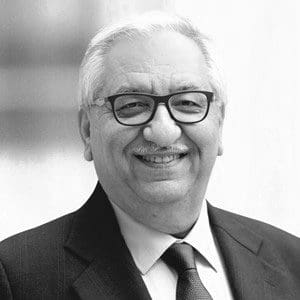Voice-enabled technologies will transform the health and happiness of the elderly.
The UN predicts a 56% rise in the number of people aged 60 years or over, taking us from over 900 million in 2015 to nearly 1.5 billion in 2030.The world’s population is changing. Our demographic is aging. And this could well be the defining issue of our time. An aging population creates a burden on health systems and individual households. Family members, clinicians, and assisted care providers will need a new generation of technology platforms to help them stay informed, coordinated, and most importantly, connected.
The social care system is facing a mountain of challenges and it can’t cope with a sustained upswing in the number of senior people and adults living with chronic illnesses.
Whether living at home or in an assisted facility, help may come from an unexpected source – technology. Speech recognition and voice-enabled devices make technology accessible to all. There’s no need to tap a keyboard or figure out how to work the remote control, you simply talk to the device from across the room. A voice-controlled device can empower a formerly ‘dis-empowered’ user. It can ease pressure on caregivers, becoming a companion and digital assistant. Of course it’s not a replacement for human interaction, but rather a meaningful addition.
How can voice-enabled assistants make a difference?
Voice-enabled assistants such as Amazon’s Alexa, Google’s Assistant, Apple’s Siri, and Microsoft’s Cortana are at the forefront of society’s screenless future. Thanks to rapid advancements in voice technology and natural language processing (NLP), these virtual assistants are far better equipped to understand human speech and respond accurately (and in real-time). These virtual-assistants can perform all sorts of tasks – including playing music on demand, calling friends or prompting you to take your medication at a certain time.
This can make a big difference to those living with a chronic illness, anyone who has limited mobility, and the elderly. It can make tasks easier and create a sense of companionship. More importantly, it helps people regain control. From simple actions such as lighting the room and adjusting the temperature, to things that are critical to our wellbeing, such as controlling access to our home and the calling for emergency assistance when needed.
How does this work in the real world?
The team at Pillohealth have come up with a ground-breaking, in-home 24/7 companion robot – Pillo – which combines voice control, facial recognition and artificial intelligence to provide personalised digital healthcare. The technology can also provide 24-hour care and companionship, entertainment on the go, reminders of when the patient needs to eat, sleep or move and the ability for the person to live independently.
The device acts as a secure pill dispenser, offers video check-ins with caregivers, can quickly and reliably identify valuable healthcare insights and can send data to healthcare professionals. But it offers much more than that to the user. They don’t need to learn how to use Pillo, they can just talk to it – and the companion robot is on hand to tune into their favourite radio station radio, answer a question, manage their calendar and give them handy reminders.
It all adds together to help the user enjoy a more independent life and could help to ease pressure on a stretched healthcare system.
Companionship is equally important
Happiness comes when the ‘assistant’ becomes something more akin to ‘companion’. A study by US company Brookdale Senior Living, explores technologies that can help the older generation stay independent for longer.
A team set out to determine whether reciting Shakespeare with a robot could increase engagement and lessen symptoms of depression. A two-foot tall robot called Nao recited the first 12 lines of Shakespeare’s Sonnet 18, “Shall I compare thee to a summer’s day?” and then prompted seniors to recite the last two lines.
Those who interacted with Nao experienced significant decreases in depression and significant increases in engagement over time. Showing the tangible capability of voice-enabled assistants to be more than just a virtual caregiver, but at times a companion who is available 24/7.
Voice can provide both practical and emotional benefits
Over time, advancements in artificial intelligence will improve voice-enabled assistants. Learning more about the user with each interaction, they will move from reactive responses to a more relevant, engaging conversation. They will become an integral part of the consumer ecosystem, seamlessly integrating across all devices and platforms to become a natural, digital companion.
Crucially, if technology is controlled by voice, it becomes accessible to everyone. There’s no need to learn how to use it, you just talk to it. A number of studies have shown that talking makes us feel happier, so it’s easy to see how voice enabled technology could transform life for the elderly in ways that are both practical and emotional. And given our aging demographic, this feels like a very good thing.



























